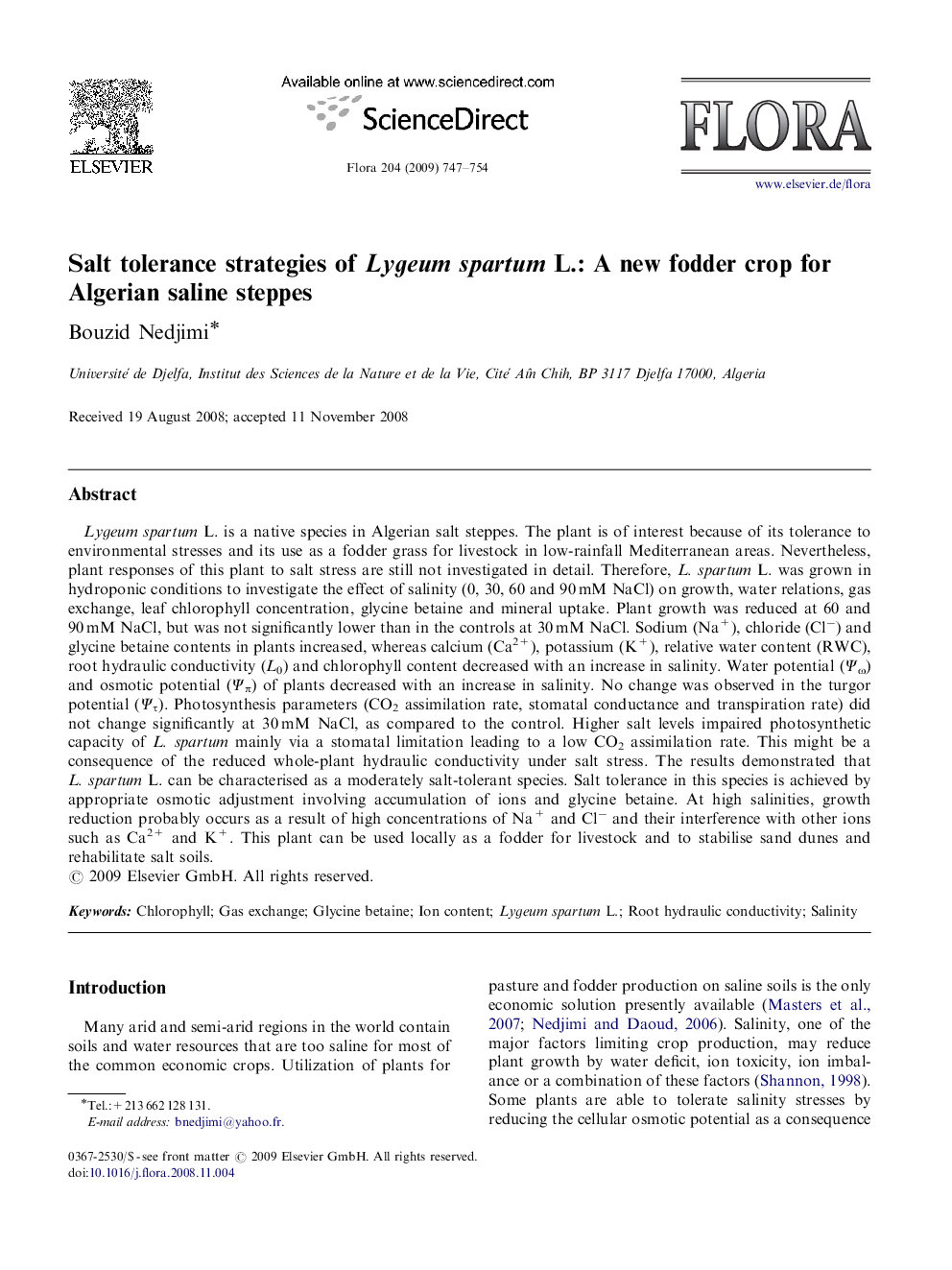| Article ID | Journal | Published Year | Pages | File Type |
|---|---|---|---|---|
| 2179991 | Flora - Morphology, Distribution, Functional Ecology of Plants | 2009 | 8 Pages |
Lygeum spartum L. is a native species in Algerian salt steppes. The plant is of interest because of its tolerance to environmental stresses and its use as a fodder grass for livestock in low-rainfall Mediterranean areas. Nevertheless, plant responses of this plant to salt stress are still not investigated in detail. Therefore, L. spartum L. was grown in hydroponic conditions to investigate the effect of salinity (0, 30, 60 and 90 mM NaCl) on growth, water relations, gas exchange, leaf chlorophyll concentration, glycine betaine and mineral uptake. Plant growth was reduced at 60 and 90 mM NaCl, but was not significantly lower than in the controls at 30 mM NaCl. Sodium (Na+), chloride (Cl−) and glycine betaine contents in plants increased, whereas calcium (Ca2+), potassium (K+), relative water content (RWC), root hydraulic conductivity (L0) and chlorophyll content decreased with an increase in salinity. Water potential (Ψω) and osmotic potential (Ψπ) of plants decreased with an increase in salinity. No change was observed in the turgor potential (Ψτ). Photosynthesis parameters (CO2 assimilation rate, stomatal conductance and transpiration rate) did not change significantly at 30 mM NaCl, as compared to the control. Higher salt levels impaired photosynthetic capacity of L. spartum mainly via a stomatal limitation leading to a low CO2 assimilation rate. This might be a consequence of the reduced whole-plant hydraulic conductivity under salt stress. The results demonstrated that L. spartum L. can be characterised as a moderately salt-tolerant species. Salt tolerance in this species is achieved by appropriate osmotic adjustment involving accumulation of ions and glycine betaine. At high salinities, growth reduction probably occurs as a result of high concentrations of Na+ and Cl− and their interference with other ions such as Ca2+ and K+. This plant can be used locally as a fodder for livestock and to stabilise sand dunes and rehabilitate salt soils.
